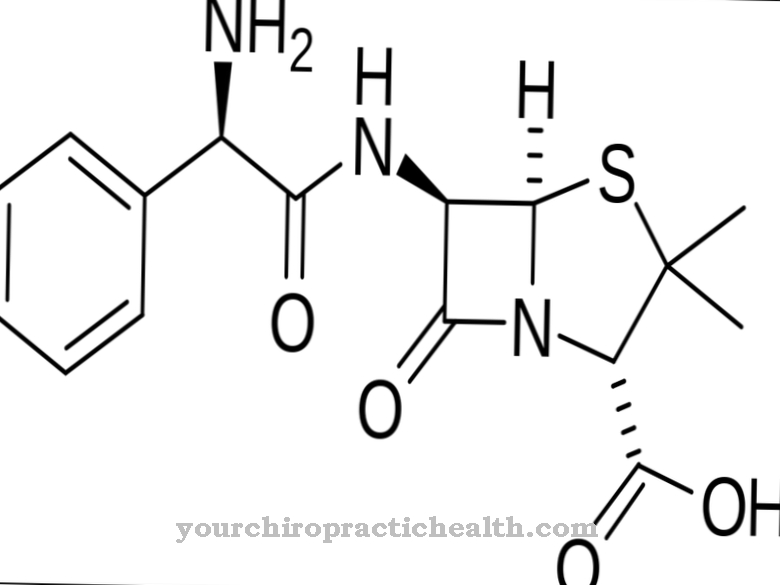Tetracyclines are drugs from the class of antibiotics. They belong to the broad spectrum antibiotics and are used in bacterial infections.
What is tetracycline?

Tetracyclines are various antibiotics that were first mentioned by Benjamin Minge Duggar in 1948. The drugs were discovered in the research department of the drug manufacturer Pfizer. Tetracyclines were patented in 1955.
Tetracyclines were first isolated from bacterial species. This resulted in chlortetracyclines and oxytetracyclines. The tetracyclines available today are chemically modified derivatives of these original substances. They are better tolerated and also have more favorable pharmacokinetics.
The tetracyclines include doxycyclines, minocyclines, and lymecyclines. These differ in their tolerability and in their pharmacokinetic properties. A derivative of the tetracyclines is tigecycline. This substance is mainly used for severe infections with multi-resistant germs.
Pharmacological effect
Tetracyclines bind to a special subunit of bacterial ribosomes. Ribosomes are small cellular particles made up of proteins. They are responsible for protein synthesis in the cells. Without this synthesis, the bacteria cannot divide.
Due to the tetracyclines, the aminoacyl-tRNA in particular cannot align itself correctly on the 50s underside of the ribosomes. The required peptidyl transferase reaction cannot be carried out. Thus, the peptide chain breaks off during protein synthesis in the bacteria. The toxicity of the drug is possibly based on the elimination of the 30-S ribosomes, which are present in the mitochondria of the host cells.
Medical application & use
The drug is effective against gram-positive and gram-negative bacteria. Bacterial species that do not have a cell wall are also sensitive to the antibiotic. These cell wallless bacteria include mycoplasma and chlamydia, for example. Borrelia and spirochetes also react to tetracycline.
Borrelia are the causative agents of Lyme disease. The disease is transmitted by ticks and is associated with dermatological and neurological symptoms. Those affected also suffer from joint pain and constant fatigue. Spirochetes are the causative agents of syphilis. Syphilis is usually transmitted through sexual intercourse. For a long time the disease had almost disappeared in Germany, but it is currently on the rise again.
Pneumonia is a typical indication for tetracycline. The remedy is mainly used for atypical pneumonia. It is also the drug of choice for Q fever. Q fever is a zoonosis caused by the bacterium Coxiella burnetii and is associated with flu-like symptoms.
Tetracycline is also used for infections of the genitourinary system. One possible indication here is inflammation of the prostate (prostatitis). Skin infections are also typical areas of application for tetracyclines. The drugs are often used to treat acne vulgaris.
Further indications for the drug are plague, cholera, tularemia and brucellosis. Tularemia is transmitted by rodents living in the wild. The pathogen is the Francisella tularensis bacterium. Brucellosis is an infectious disease caused by gram-negative rod bacteria. It can occur in humans and animals. Most infections are subclinical. However, night sweats, chills and nausea can also occur. Many illnesses heal spontaneously, but there are also protracted chronic inflammations that are accompanied by serious symptoms such as depression or constant insomnia.
Risks & side effects
The main side effects of tetracycline are non-specific stomach and intestinal problems. Vomiting and nausea, in particular, are quite common. Neurological dizziness can also be observed. It can also cause itching and rashes. Tetracyclines cause an increase in transaminases, especially at high doses. Inflammation of the pancreas (pancreatitis) can occur.
The drug not only harms the harmful bacteria. The local flora of the vagina, skin and intestines is also severely impaired. This can lead to fungal infections of the vagina (vaginal fungus) and skin (skin fungus), especially with prolonged use. These are also known as candidiases.
Another serious secondary disease after taking tetracycline is pseudomembranous colitis. This leads to severe inflammation of the colon. The damage to the intestinal flora usually manifests itself in the form of digestive disorders and diarrhea. Pregnant and breastfeeding women should not take tetracycline. The drug is built into the bones and tooth enamel of the unborn child along with calcium. As a result, on the one hand, the teeth discolour and, on the other hand, the storage of the mineral leads to an increased susceptibility to fractures. Tetracyclines can therefore only be used from the age of ten to twelve.
Since tetracyclines can form complexes with metal ions such as magnesium, iron or aluminum, they must be taken separately from calcium-containing foods such as milk or quark. Antacids, magnesium supplements, or iron supplements must also not be taken together with the antibiotic.
Women should be aware that tetracyclines can make oral contraceptives less effective. Therefore additional contraception should be used while taking it. Tetracyclines should not be used during isotretinoin therapy. Both drugs can dangerously increase intracranial pressure.
Of course, tetracyclines must not be taken if there is a tetracycline intolerance. Otherwise, you may experience severe allergic symptoms.In the worst case, allergic shock occurs.






.jpg)






.jpg)

.jpg)
.jpg)











.jpg)